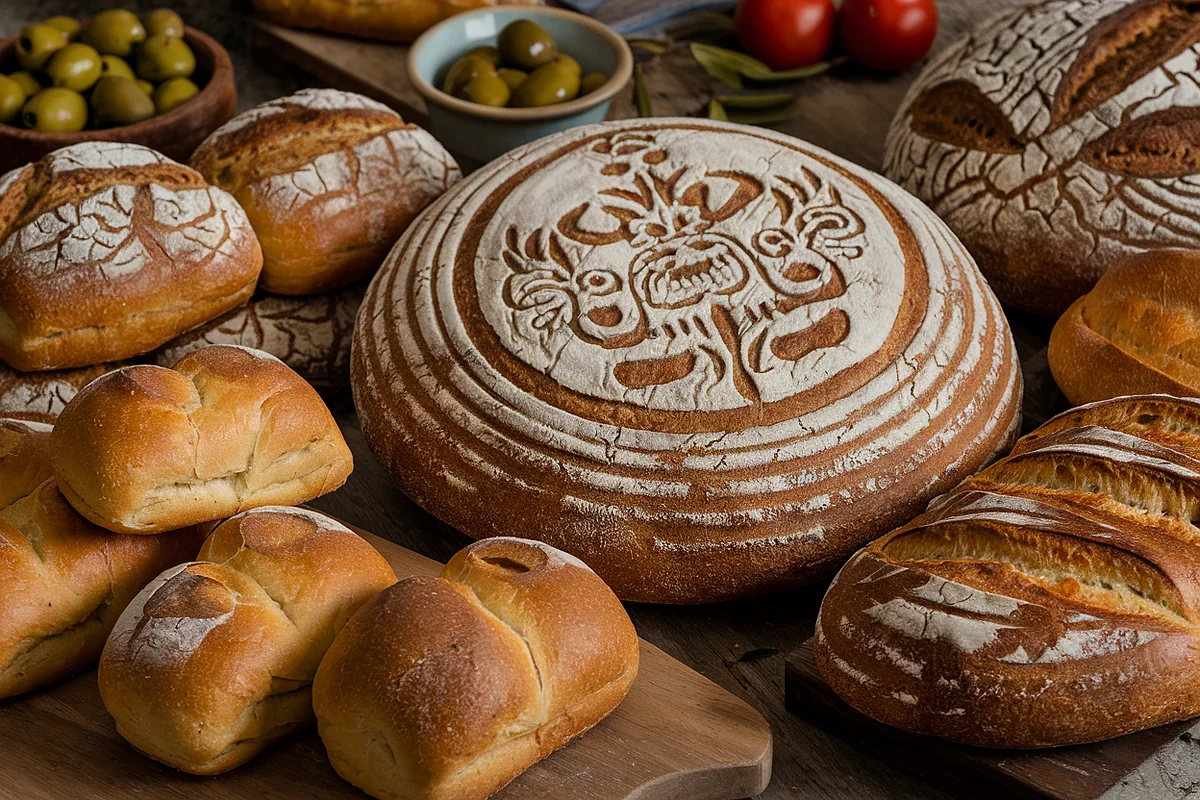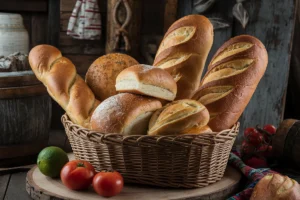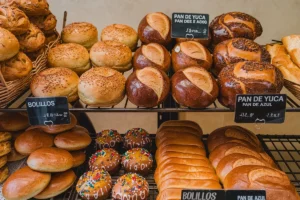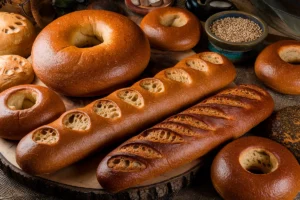Mexican cuisine is renowned for its bold flavors and diverse culinary techniques, but one aspect often overlooked is its incredible variety of breads. From savory loaves like bolillos to sweet treats such as conchas, Mexican bread plays a central role in everyday meals and cultural traditions. With a history spanning centuries, these breads reflect a combination of European influences and indigenous ingredients that define Mexican culinary culture.
In this guide, we’ll explore the origins, varieties, and significance of Mexican bread. By the end, you’ll understand its cultural importance and how to make some of these traditional breads at home.
The Rich History of Mexican Bread
Mexican bread owes its origins to the Spanish introduction of wheat in the 16th century. Before their arrival, indigenous Mexicans relied on corn-based foods like tortillas, which still remain a staple today. As wheat farming spread, local communities began incorporating it into their diets.
In the 19th century, French immigrants introduced new bread-making techniques, which resulted in the creation of breads like bolillo, a bread similar to the French baguette. Bakeries, or panaderías, quickly became cultural and social hubs throughout the country.
Today, bread transcends its role as a daily staple. Special breads like pan de muerto (bread of the dead) are baked for holidays such as Día de los Muertos. Others, like telera and bolillo, serve as the foundation for the iconic tortas, Mexico’s beloved sandwiches.
Types of Mexican Bread
Mexican bread is incredibly diverse. Here are some of the most popular types of Mexican bread that showcase the country’s rich culinary traditions.
1. Conchas: The Icon of Mexican Pan Dulce
Conchas are perhaps the most famous type of Mexican bread. Their round shape, topped with a sugar-based coating, resembles a seashell (hence the name, concha means shell in Spanish). The sweet topping comes in different flavors like vanilla, chocolate, and strawberry, giving them their distinctive color.
Conchas are typically served with coffee or hot chocolate for breakfast or as an afternoon snack. Their softness and sweetness make them a beloved part of Mexican bakery culture.
2. Bolillo: The Mexican Baguette
Bolillo is a crusty, savory bread roll that resembles the French baguette but is shorter and thicker. It has a crisp crust with a soft, chewy interior, making it perfect for tortas—Mexico’s famous sandwiches stuffed with meats, cheeses, beans, and other fillings.
For an authentic take on this staple, check out this easy Mexican Bolillo Bread Rolls Recipe.
3. Pan de Muerto: A Bread for Remembrance
Pan de muerto holds cultural significance as it is baked for Día de los Muertos, a holiday that celebrates the lives of deceased loved ones. This sweet bread is flavored with orange blossom water and topped with sugar, often decorated with bone-like shapes representing the circle of life.
4. Telera: The Sandwich Bread
Telera is another popular bread used in Mexican sandwiches, particularly for tortas. It’s softer and flatter than bolillo, with a slightly sweet flavor. Because of its texture, it is often used in sandwiches that are pressed or grilled, like torta de milanesa.
5. Cemita: A Taste of Puebla
Originating from Puebla, the cemita is a sesame-seed sandwich bun with a slightly sweet flavor. This bread is essential for the famous cemita poblana sandwich, which is filled with breaded meat, avocado, cheese, and various sauces. The soft texture makes it ideal for hefty sandwiches.
6. Orejas: A Sweet, Crispy Treat
Orejas, also known as “elephant ears” or palmiers, are puff pastry cookies that are crispy and light. Bakers coat them with caramelized sugar, making them a perfect snack to enjoy with tea or coffee. Although they aren’t bread, they are a staple offering in Mexican bakeries.
7. Birote Salado: A Specialty of Guadalajara
Birote salado, or salty bread, originates from Guadalajara. It has a crusty exterior and a slightly sour flavor. This bread is often used in torta ahogada, a sandwich submerged in a spicy tomato sauce. Its hearty texture holds up well even when soaked.
8. Pan de Elote: A Sweet Cornbread
Pan de elote is a rich, sweet cornbread often made with fresh corn kernels, milk, and sugar. Unlike the cornbread found in the United States, this version is denser and sweeter, with a moist texture that makes it a popular dessert or snack.
9. Tortillas: The Essential Flatbread
No list of Mexican breads is complete without mentioning tortillas. Though tortillas differ from leavened breads, they remain central to the Mexican diet. Corn and flour tortillas serve as the foundation for dishes like tacos, quesadillas, and enchiladas. Handmade tortillas bring out the best flavor and texture.
Bread in Mexican Celebrations
Bread is more than a food staple in Mexico; it is also a symbol of celebration and remembrance. Special breads play a significant role during holidays and family events.
Día de los Muertos and Pan de Muerto
During the annual Día de los Muertos celebration, families gather to honor their deceased loved ones. Pan de muerto, a sweet bread topped with sugar, is often placed on altars and eaten as part of the festivities. The bread’s round shape and bone-like decorations represent life and death, bringing comfort and joy during the holiday.
Capirotada: Mexican Bread Pudding for Lent
Another famous holiday dish is capirotada, a bread pudding traditionally eaten during Lent. Made from layers of bolillo, cheese, nuts, dried fruit, and spices, capirotada is soaked in syrup made from sugar and cinnamon. This sweet and savory dish symbolizes the suffering of Christ.
Making Mexican Bread at Home
If you want to try baking some of these delicious breads at home, here are a couple of easy recipes to get started.
Recipe for Conchas
Ingredients:
- 3 ½ cups all-purpose flour
- ½ cup sugar
- 1 packet active dry yeast
- 1 cup warm milk
- 3 eggs
- ½ cup melted butter
- A pinch of salt
Instructions:
- In a small bowl, mix yeast, 1 tablespoon sugar, and warm milk. Let it sit until frothy.
- Combine the remaining flour, sugar, and salt in a large bowl. Add the eggs, butter, and yeast mixture.
- Knead the dough on a floured surface for about 10 minutes until it becomes smooth and elastic.
- Place the dough in a greased bowl, cover, and let rise for 1-2 hours until it doubles in size.
- Divide the dough into small balls, flatten slightly, and cover with a topping made of butter, sugar, and flour.
- Bake at 350°F (175°C) for 20-25 minutes until golden brown.
Recipe for Bolillo
Ingredients:
- 4 cups bread flour
- 2 teaspoons yeast
- 2 teaspoons salt
- 1 ½ cups warm water
Instructions:
- Mix flour, yeast, salt, and water in a large bowl until a sticky dough forms.
- Knead the dough on a floured surface for 10 minutes.
- Place the dough in a greased bowl and let it rise for 1 hour.
- Shape the dough into oval rolls and let rise for another 30 minutes.
- Bake at 450°F (230°C) for 15-20 minutes until the bread becomes crispy and golden.
Modern Variations and Healthier Options
In recent years, Mexican bakers have created modern variations of classic breads, catering to health-conscious consumers.
Gluten-Free and Vegan Mexican Breads
For those with dietary restrictions, gluten-free and vegan versions of traditional Mexican breads are now widely available. Bakers substitute flours like almond and rice for wheat, and use plant-based ingredients in place of eggs and dairy, allowing more people to enjoy the taste of Mexican bread.
Whole Wheat and Low-Sugar Options
In response to growing health trends, many bakeries now offer whole wheat and low-sugar varieties of bolillos and pan dulce. These breads provide more fiber and lower sugar content while still delivering the flavors of traditional Mexican baking.
The Importance of Panaderías in Mexican Culture
Across Mexico, panaderías are community hubs where locals buy fresh bread, pastries, and other baked goods. These bakeries open early and stay busy all day, offering a wide array of breads and treats to suit any occasion. The daily trip to the local bakery is a cherished tradition for many Mexican families, and bread is often enjoyed with meals or as a snack throughout the day.
FAQs about Mexican Bread
What is the most popular Mexican bread?
Concha is the most popular type of Mexican bread, known for its soft texture and sweet, shell-like topping.
How does Mexican bread differ from other types of bread?
Mexican bread blends European and indigenous baking techniques, often using sweet flavors and unique ingredients like cinnamon and orange blossom water.
Can I freeze Mexican bread?
Yes, you can freeze Mexican bread. Wrap it tightly in plastic wrap and store in an airtight container for up to three months.
What is pan dulce?
Pan dulce, or sweet bread, refers to a variety of Mexican pastries and breads, such as conchas, orejas, and pan de muerto.
Is Mexican bread healthy?
While traditional Mexican breads are typically high in sugar and carbohydrates, modern versions using whole grains and low-sugar options offer healthier alternatives.
Conclusion
From the sweet, iconic conchas to the savory bolillo, Mexican bread offers a rich and diverse array of flavors and textures. Whether you’re enjoying a holiday celebration with pan de muerto or grabbing a torta on the go, bread plays an essential role in Mexico’s culinary landscape.
Modern variations and health-conscious adaptations ensure that there’s a version of Mexican bread for everyone, regardless of dietary preferences. The next time you visit a panadería, be sure to try a new type of bread or bake some of these traditional recipes at home to bring a taste of Mexico into your kitchen.



